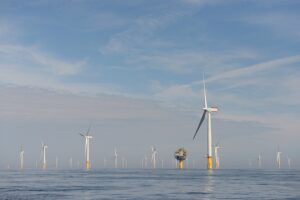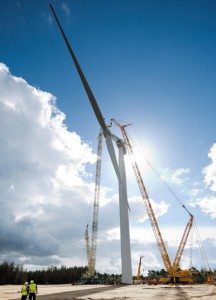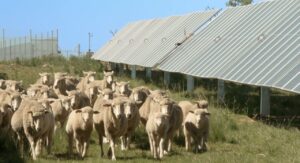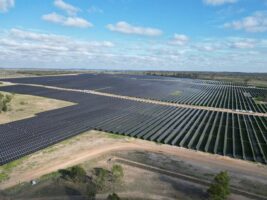Danish wind turbine manufacturer Vestas Wind Systems A/S announced this week that it had received the first order for its new V155-3.3MW wind turbine designed for low and ultra-low wind conditions. Vestas will supply 61 turbines and towers to two projects in China totalling 201MW.
Vestas’ new V155-3.3MW wind turbine was introduced to the Chinese market in June of last year, seeking to fill a gap which utilises the growth of wind turbine efficiency to make even more sites viable for wind energy.
This particular trend is vitally important in China, the world’s largest wind energy market, where the wind industry is up against an increasingly competitive business environment with the transition to grid parity pricing as well as a more decentralised energy infrastructure with distributed wind projects.
In seeking to meet the need of Chinese wind energy developers, Vestas introduced its V155-3.3MW wind turbine, which combines the largest rotor with the lowest power rating of the company’s 4MW platform which optimises a project’s capacity factor in low wind speeds.
By using lower rotor rotational speeds, the V155-3.3MW turbine’s low sound power levels combined with its full-scale converter’s advanced grid capabilities make it highly suitable for China’s centralised projects as well as the number of distributed wind energy projects.
Announced on Wednesday, Vestas confirmed that it had received its first order for 61 of the V155-3.3MW wind turbines as well as towers and a 5-year Active Output Management service contract. Both projects are part of China’s ongoing auction scheme but details of both customer and project names are undisclosed at the moment.
“This order comes less than six months after the introduction of V155-3.3 MW, demonstrating the optimal market fit of the product in China’s low wind market,” said Thomas Keller, President of Vestas China.
“Designed specifically to meet customer needs and market requirements in China, the V155-3.3 MW will offer our customers a lower cost of energy and better business case certainty. This will lay the foundation for success as the market transitions to distributed wind and grid-parity projects, causing a more competitive and complex business environment.”
“This order demonstrates how Vestas’ latest 4 MW variant is able to increase our customers competitiveness in the Chinese market by offering enhanced customer value and improved grid integration,” added Thomas Scarinci, senior vice president of Vestas Product Management.
“The new variant shows how we, together with our local partners, continue to strengthen our offerings in the world’s largest wind energy market.”
By introducing more efficient and location-specific wind turbines, Vestas is opening the door for greater onshore wind development through the use of low and ultra-low wind sites which otherwise would be incompatible with the technology.
Boasting turbine blades of 76-metres set to be co-developed with a local Chinese partner, Vestas is not only increasing the viability of onshore wind across China but is committing to ensuring the competitiveness of China’s onshore wind sector.










